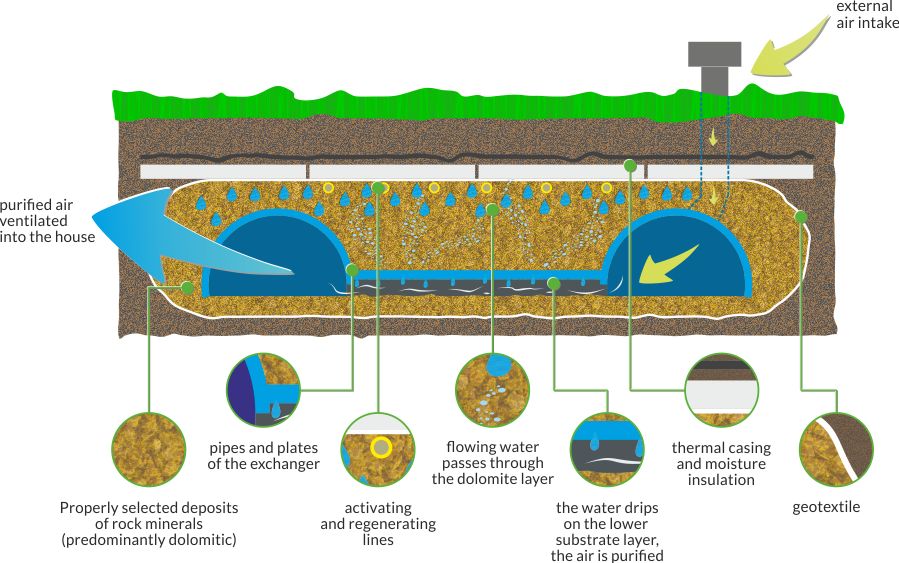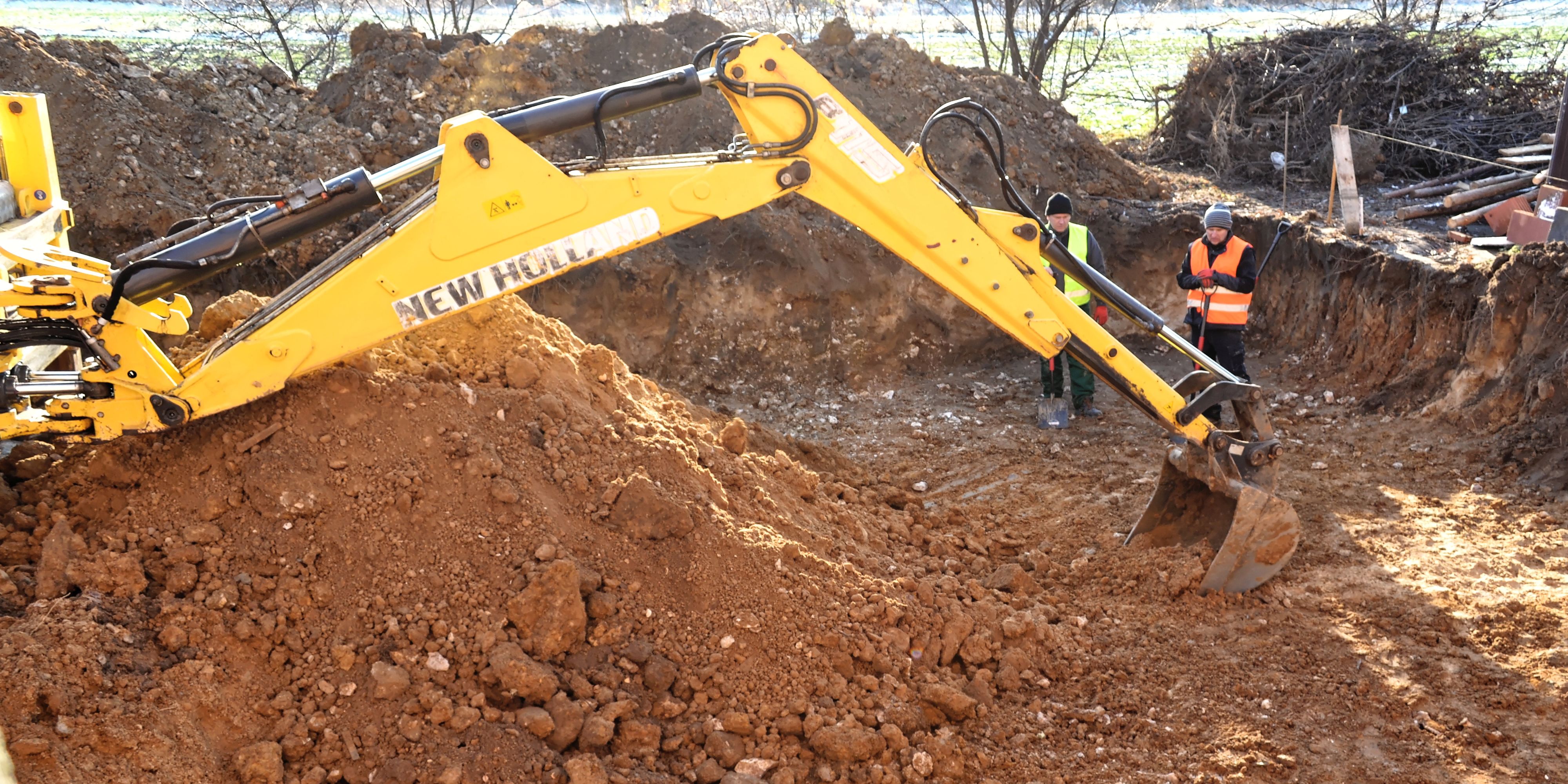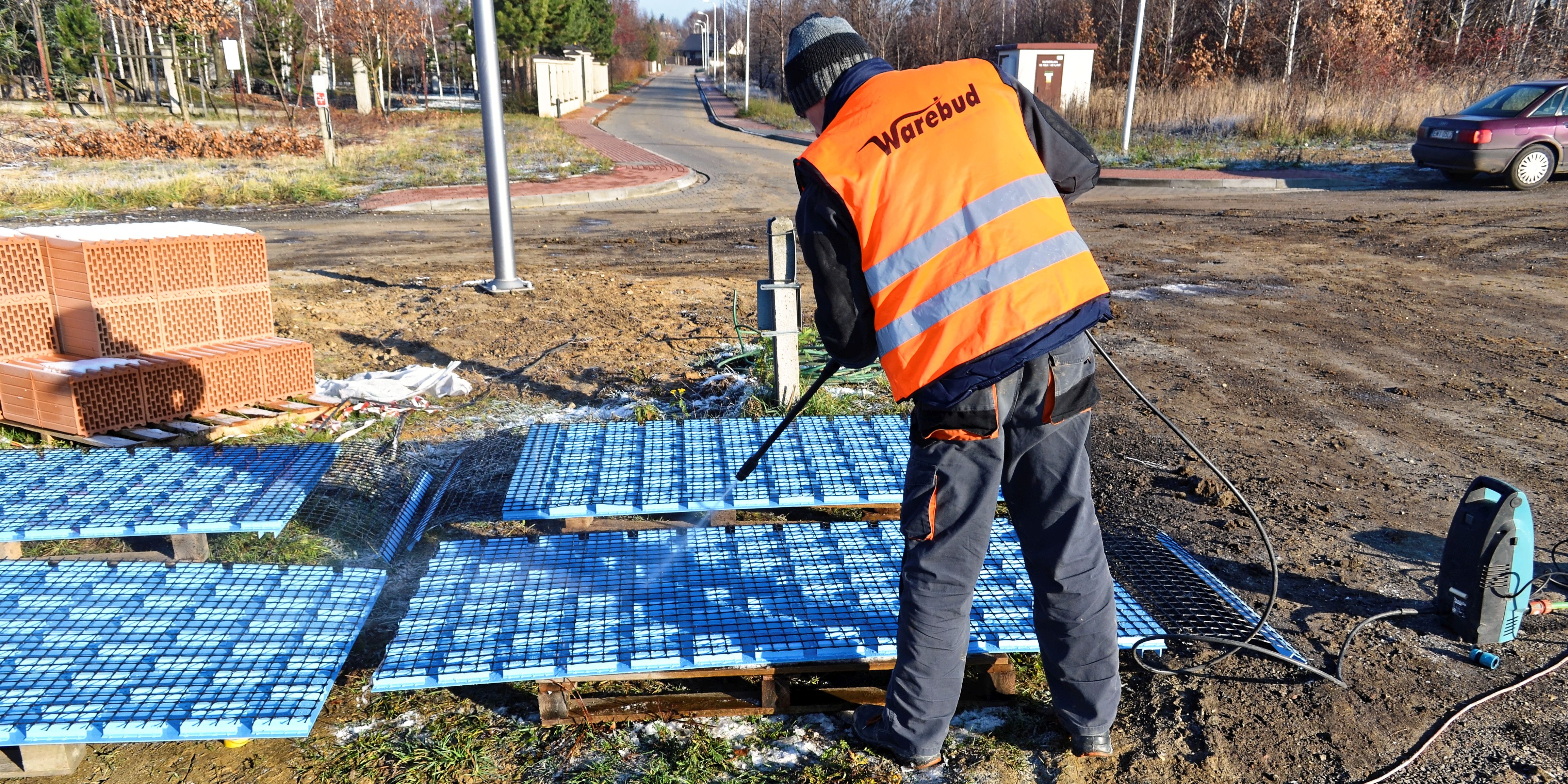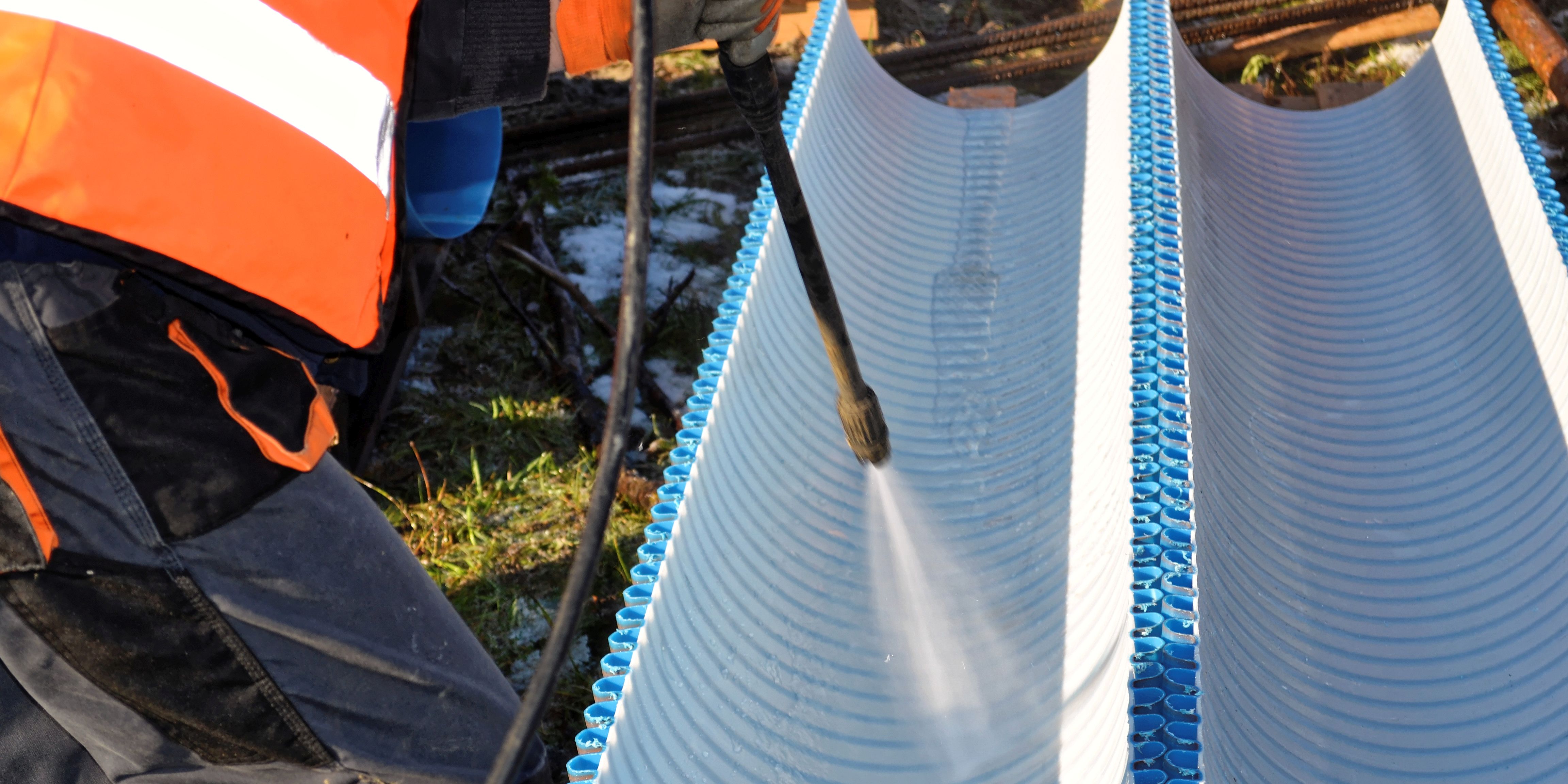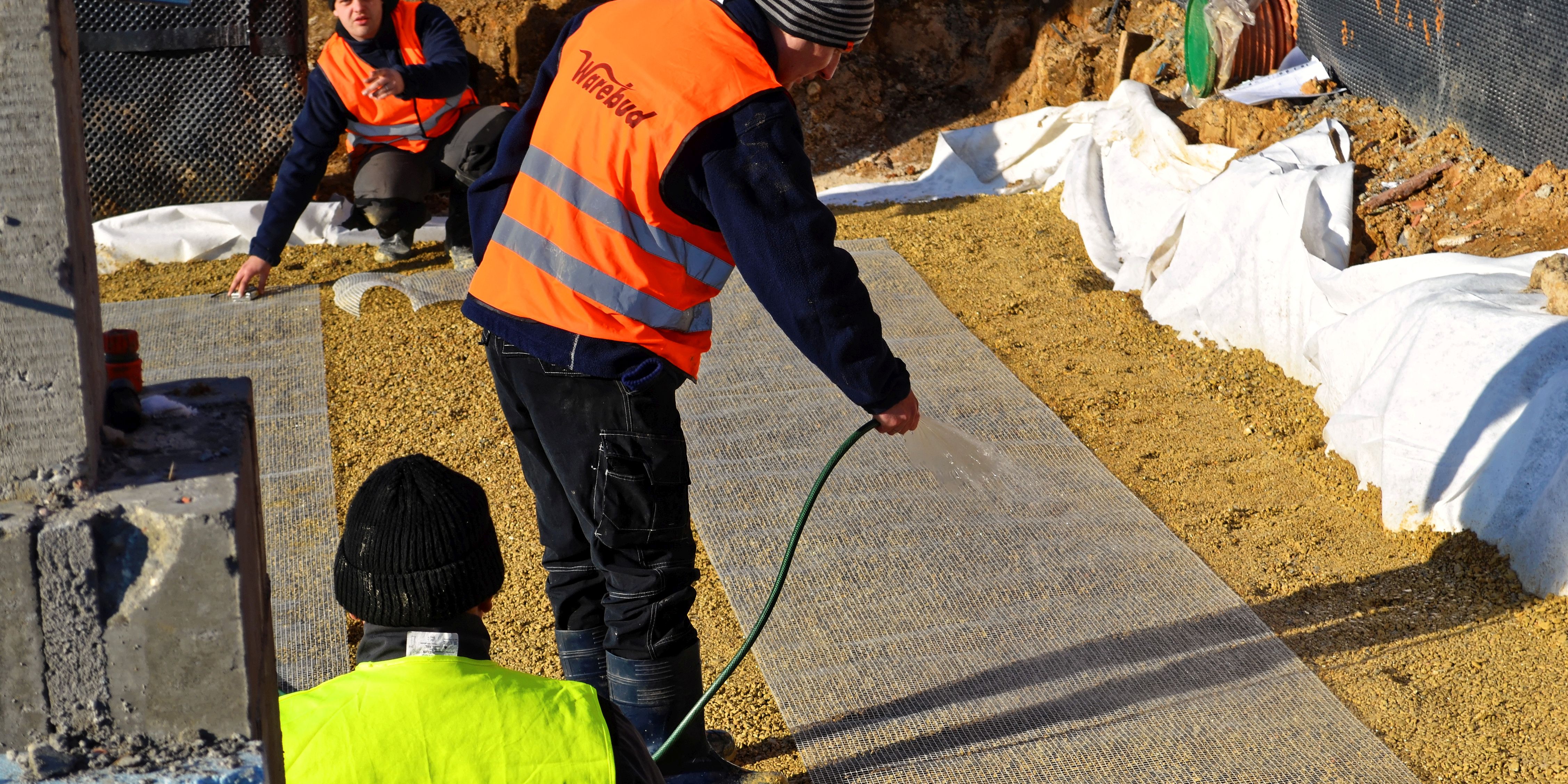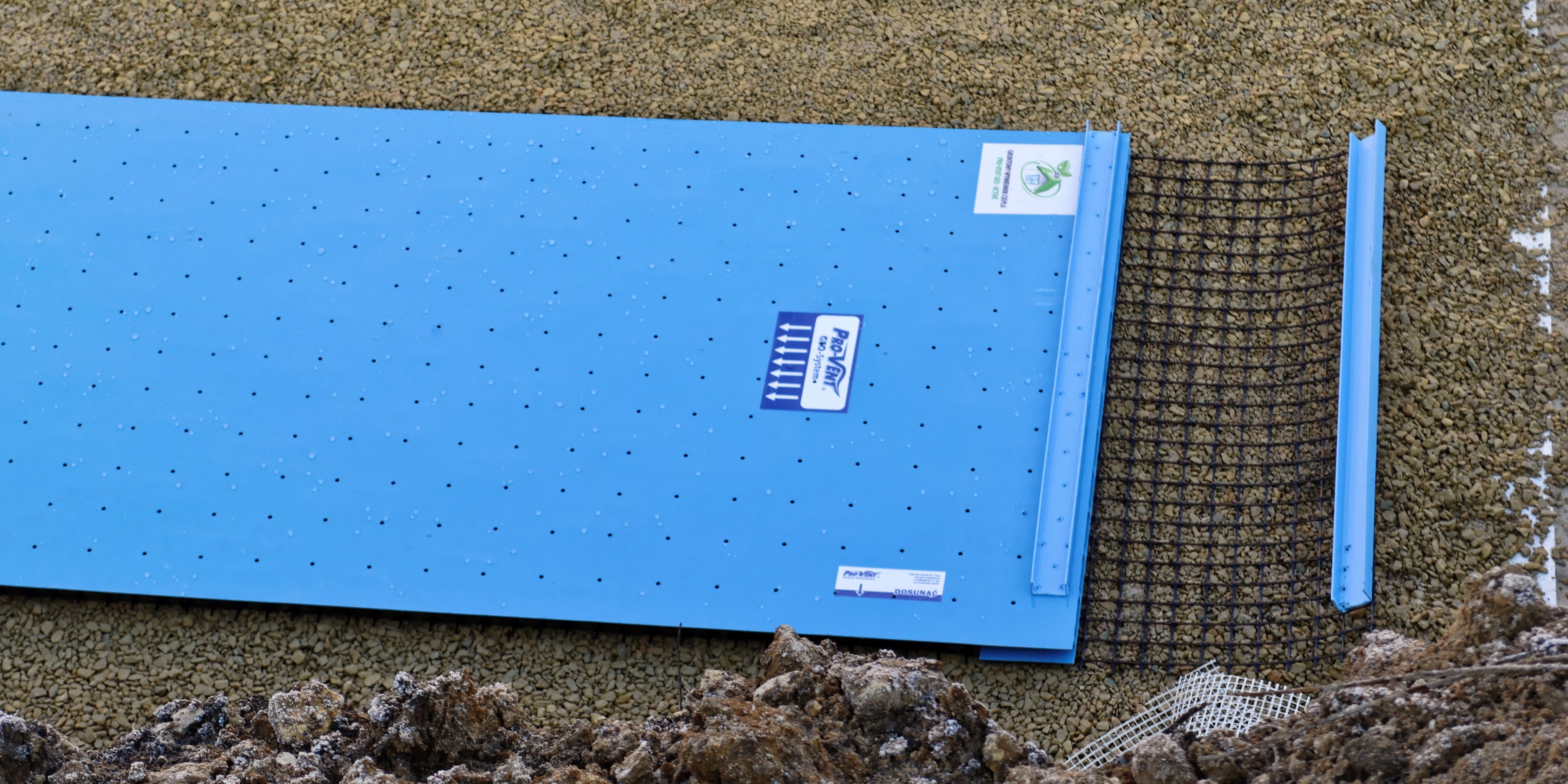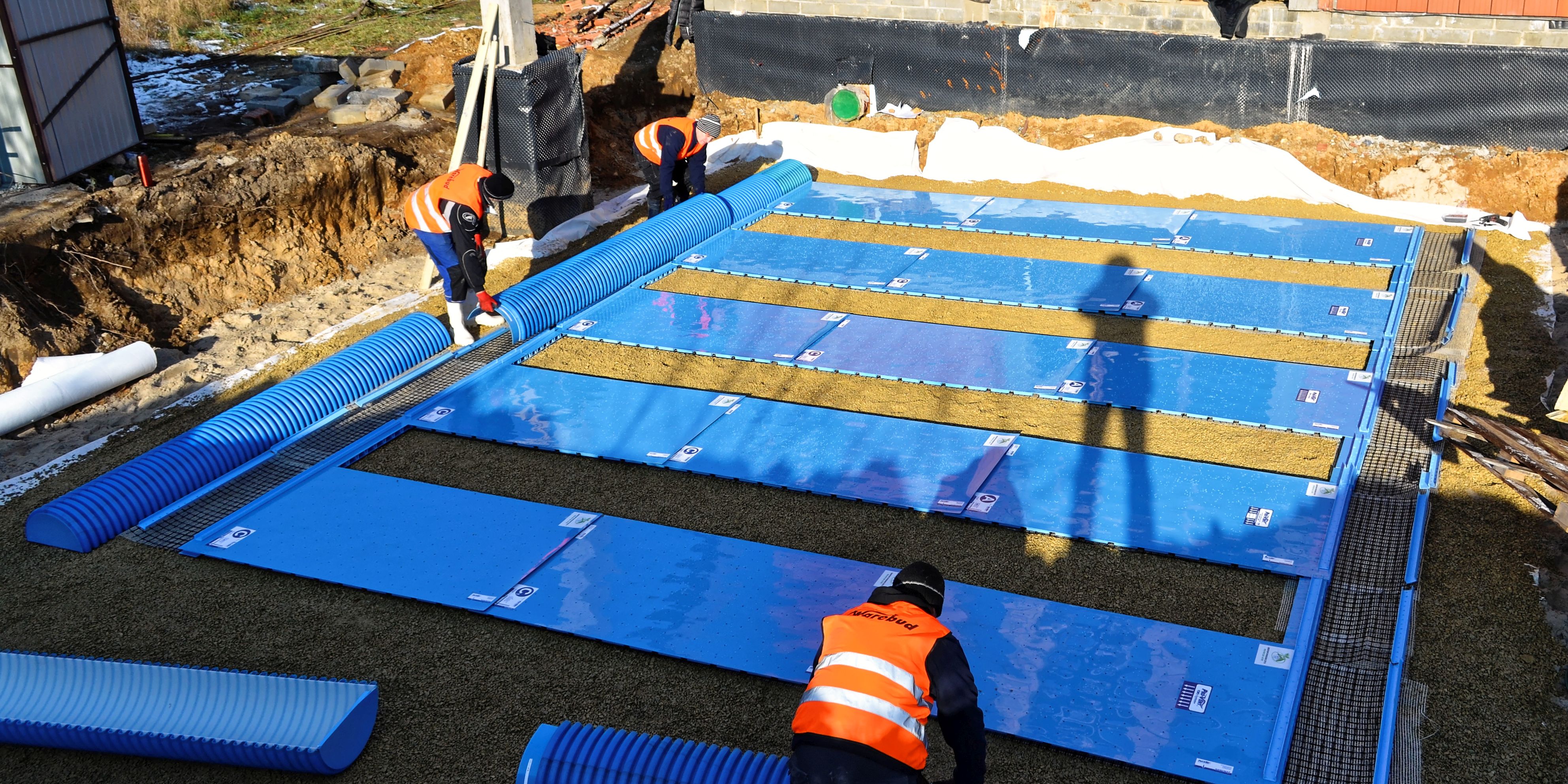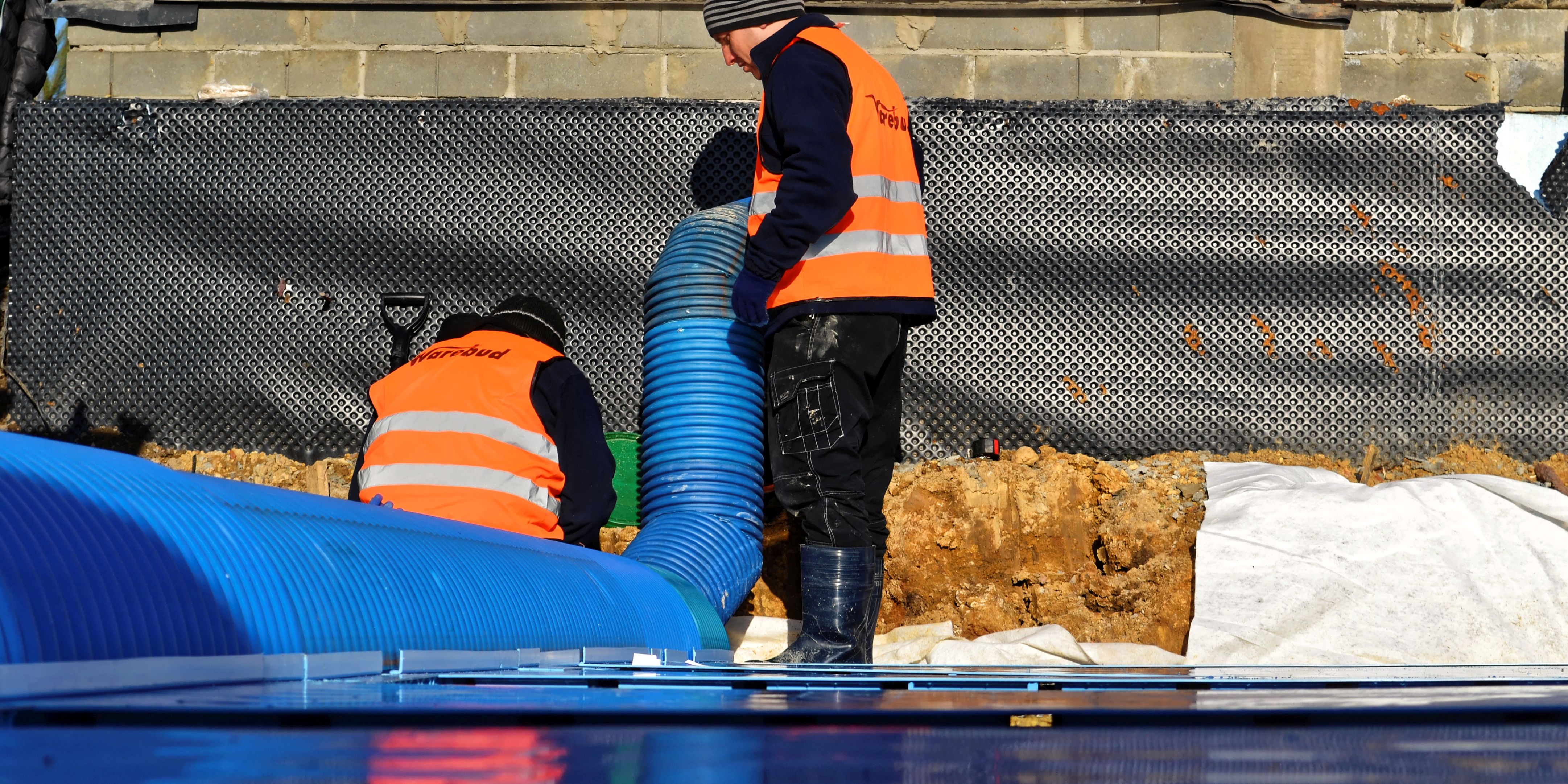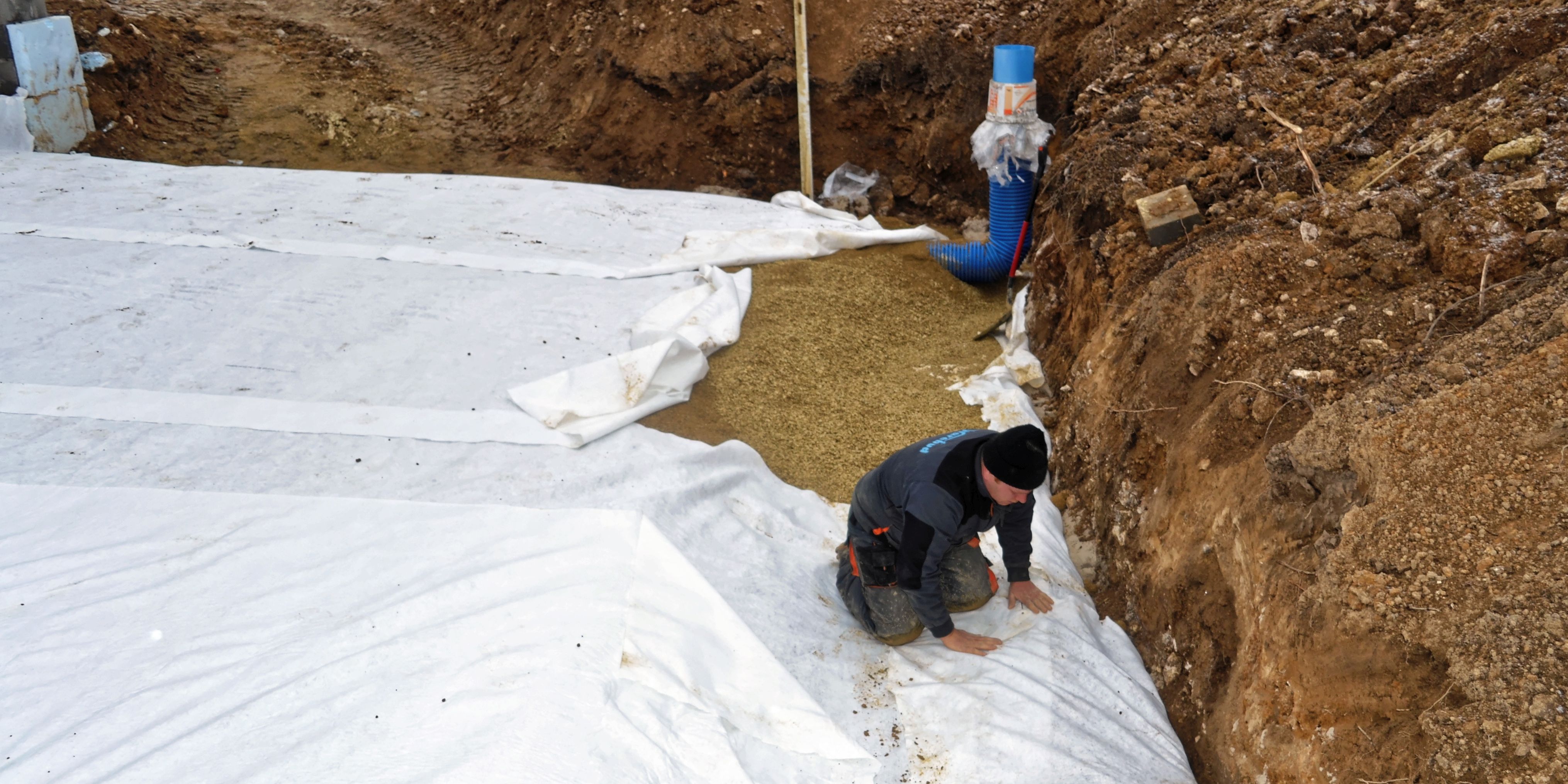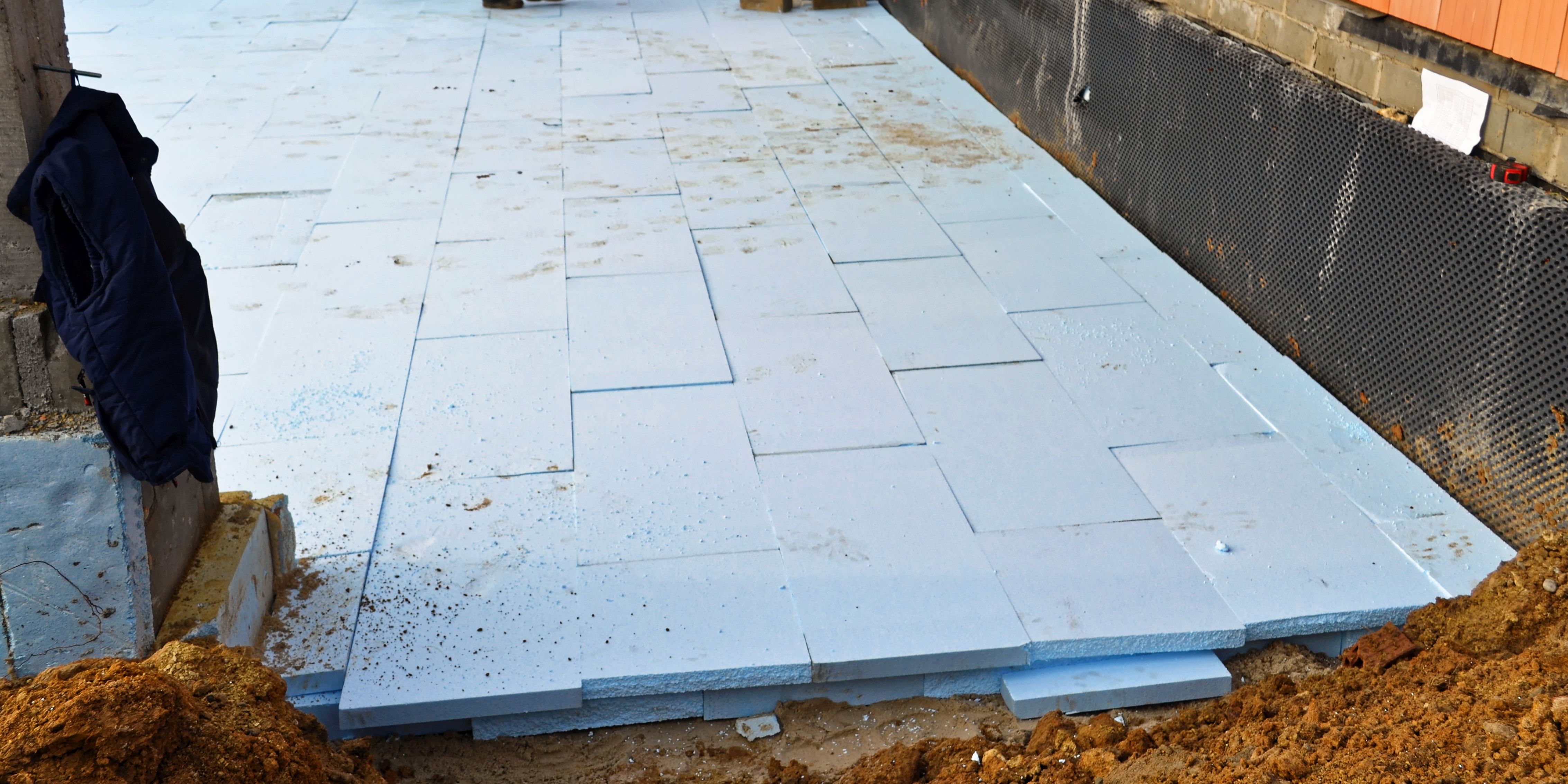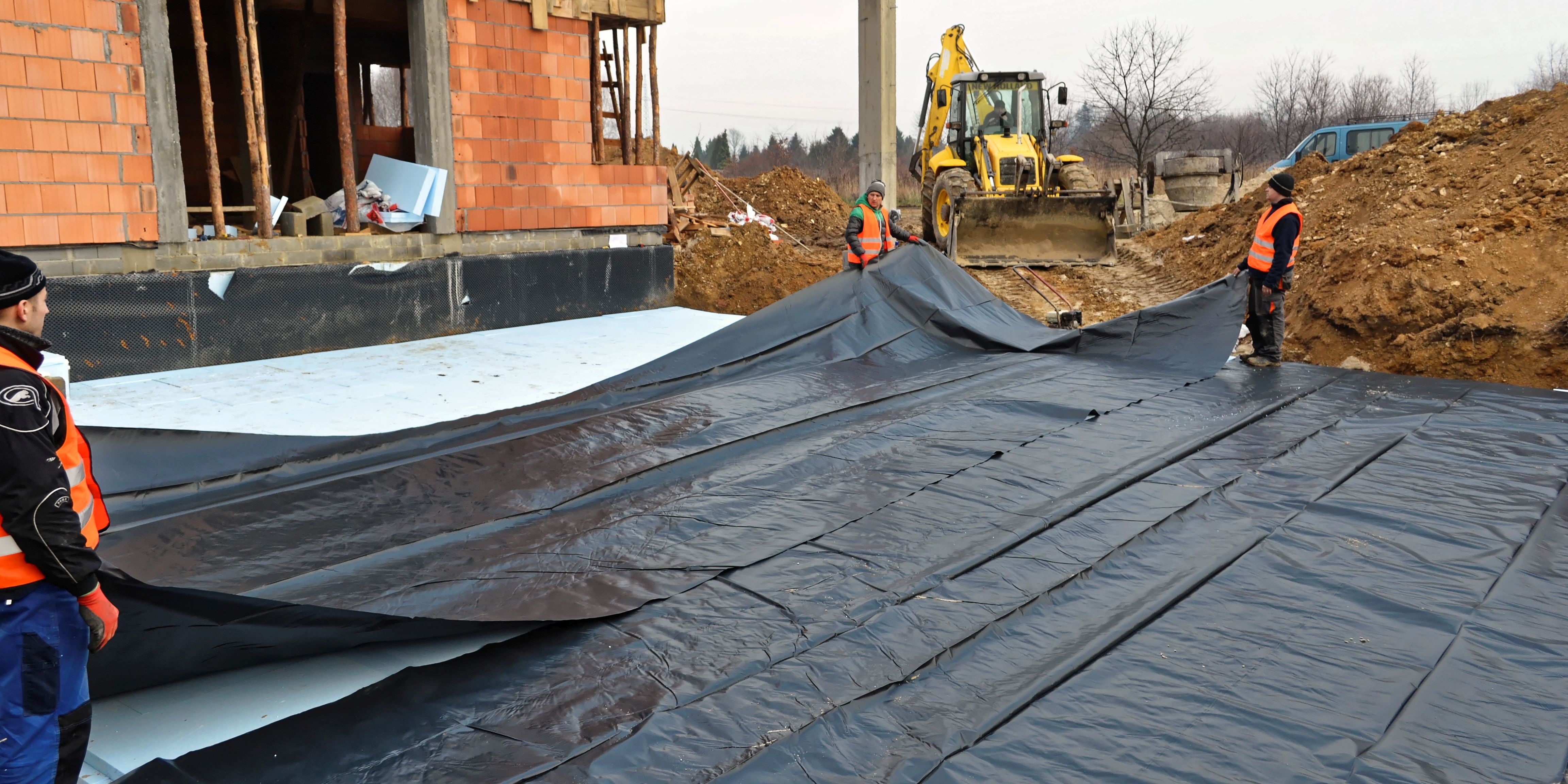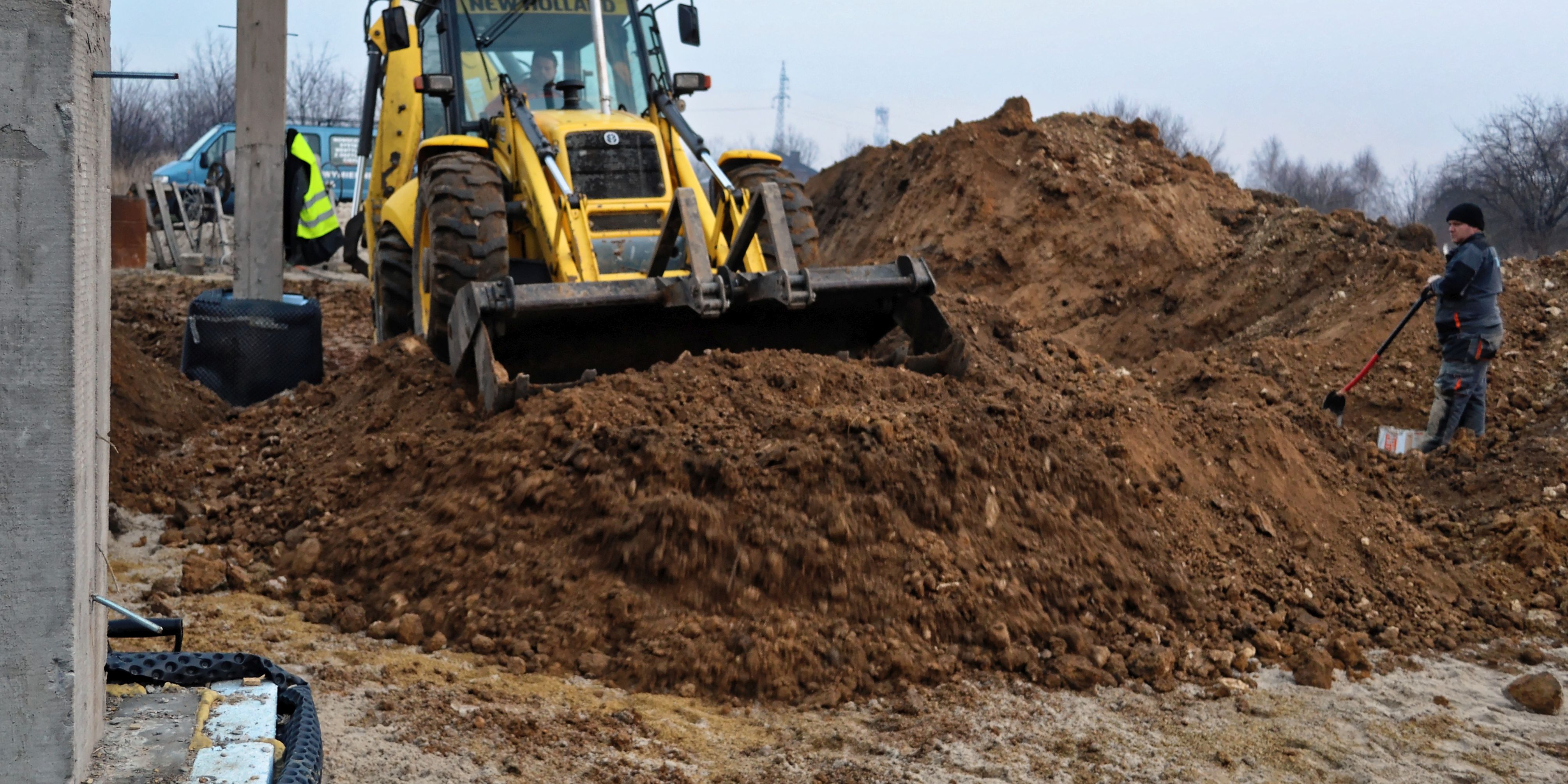How the Salutaire system works
The Salutaire system is based on the use of a patented ground heat exchanger with two rock deposits, predominantly dolomite.
The ground heat exchanger installed at a correct depth below the surface is designed to:
- purify, filter and enrich the air flowing.
- preheat and humidify the air in winter, which significantly reduces heating costs and ensures optimum operation of recuperators during very cold weathers;
- cool and dry air in summer, which can dramatically improve the microclimate inside the rooms provide a pleasant feeling of coolness.
Ground air heat exchanger operates as follows.
The air needed for ventilation is taken by a filtered ground air intake, which should be located in a place with low concentration of impurities, away from the streets, parking lots and other sources of emissions, etc. Air is transported to the ground heat exchanger through the pipe system. Properly selected and integrated deposits of rock minerals (dolomitic base) allow for the processes in which the air becomes cleaner biologically and chemically, and is enriched with macro, micro and ultra microelements in ionic form. At the same time, depending on the external temperature, air is heated or cooled.
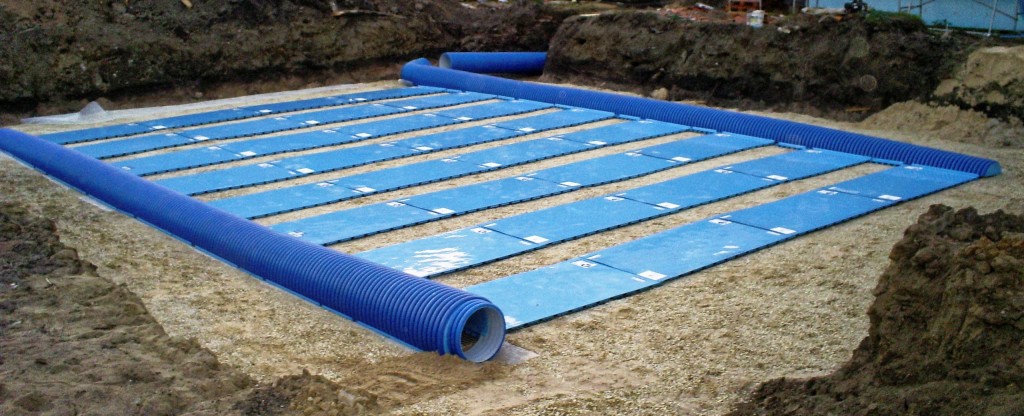
During frosts, air is preheated and humidified in the in the heat exchanger, obtaining a temperature above zero and higher relative humidity. Then pit asses through the recuperator – ventilation unit, reaching near room temperature. This way we obtain fresh air in rooms, avoiding heat losses that occur when ventilatin the building through open windows.
During frosts, air is preheated and humidified in the in the heat exchanger, obtaining a temperature above zero and higher relative humidity. Then pit asses through the recuperator – ventilation unit, reaching near room temperature. This way we obtain fresh air in rooms, avoiding heat losses that occur when ventilatin the building through open windows.
Montaż instalacji
Innovations used in Salutaire ground heat exchangers
- The use of two rock deposits – the main mineral is dolomite
- Substructure – mineral deposit tailored mainly to the prevailing ground conditions.
- Superstructure – mineral deposit adapted to the prevailing ground conditions and locations, and individual user preferences.
- Minimizing the amount of bacteria and fungi in the transmitted air.
- Air supply free of allergens
- Enriching the supplied air in macro-, micro- and ultra microelements in ionic form.
- Reducing the concentration of smog gases and CO2.
- Constant cleanliness of the exchanger thanks to cyclical flushing of deposits.
- Greater energy efficiency.


